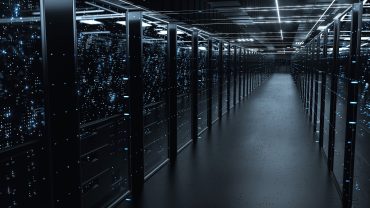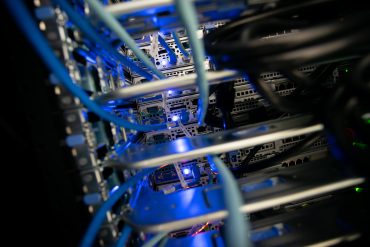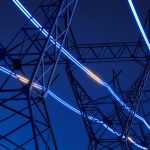
- Data Centers
- Green Tech
- US Energy Policy
Texas SB6: ERCOT Can Cut Data Center Power in Emergencies
6 minute read

Texas data center regulations aim to prevent blackouts as artificial intelligence drives record-breaking power consumption across state grid
Key Takeaways
- Texas grants emergency shutdown powers to grid operator ERCOT, allowing power cuts to data centers consuming 75 MW or more during grid emergencies under new Senate Bill 6.
- Data center demand to surge 59% by 2030 as ERCOT forecasts large loads growing from 87 GW currently to 138 GW, driven by AI and cryptocurrency operations requiring 10-30 times more energy than standard computing.
- Major tech companies face new regulations as Apple, Google, Microsoft, Meta, and Oracle must equip Texas data centers with emergency shutdown switches by December 2025 and share grid infrastructure costs.
Introduction
Texas becomes the first state to grant its grid operator authority to cut power to data centers during emergencies, marking a turning point in how states manage surging energy demand from artificial intelligence operations. The Electric Reliability Council of Texas (ERCOT) now possesses unprecedented power to shut off energy-intensive facilities consuming 75 MW or more when grid stability is threatened.
Governor Greg Abbott signed Senate Bill 6 into law following deadly blackouts during the 2021 winter storm that killed over 200 people while industrial operations remained online. The bipartisan legislation addresses growing concerns that data center expansion could overwhelm the state’s aging electrical infrastructure and trigger future crisis situations.
Key Developments
The new law establishes both mandatory and voluntary demand response programs targeting large energy consumers. Data centers seeking grid connections after December 31, 2025, must install emergency shutdown switches that ERCOT can activate during system emergencies.
Senate Bill 6 requires facilities with peak demand above 75 MW to participate in the Large Flexible Load program and share costs for transmission infrastructure upgrades. The legislation also creates protocols for colocating data centers with existing power generators and mandates interconnection study fees.
Texas regulators are developing implementation guidelines with industry leaders as the state prepares for exponential growth in data center construction. The Dallas-Fort Worth area currently hosts more than half of Texas’s 279 data centers as of September 2024, with aggressive expansion plans underway.

Market Impact
Major technology companies face significant operational changes as they invest billions in Texas data center infrastructure. Apple, Google, Microsoft, Meta, and Oracle must now factor emergency shutdown capabilities and cost-sharing requirements into their facility planning and financial projections.
Utilities anticipate substantial capital investments in transmission lines and generation capacity to support data center demand, with costs likely passed to all ratepayers. The financial burden of infrastructure upgrades creates pressure on electricity rates across the state as the grid adapts to unprecedented demand levels.
Energy system analysts project Texas electricity demand will nearly double by 2030, marking the fastest growth rate since the 1980s. This surge strains existing infrastructure and forces utilities to accelerate modernization efforts while managing reliability risks.
Strategic Insights
The legislation signals a fundamental shift in how states balance economic development with grid reliability as AI operations consume exponentially more power than traditional computing. An AI query uses 10-30 times more energy than a standard web search, creating unprecedented demands on electrical systems.
Texas’s approach establishes a precedent for other states grappling with similar challenges, according to Reuters. Ohio, Virginia, and Arizona face comparable pressures as they court data center investments while managing infrastructure limitations and community concerns about resource consumption.
The law positions data centers as controllable loads rather than protected industrial customers, fundamentally changing their operational status. This classification enables grid operators to treat these facilities as flexible resources during system stress rather than guaranteed power consumers.

Expert Opinions and Data
NRG Vice President of Regulatory Affairs Travis Kavulla explains the law’s intent “to make sure [large loads] pose as little reliability risk to the system as possible and [are] not drinking the milkshake of all other Texas power customers.”
Lieutenant Governor Dan Patrick called ERCOT’s demand forecast “shocking” and emphasized that “it can’t be the Wild Wild West of data centers” as the state manages unprecedented growth projections.
Tyler Norris, a fellow at Duke University, notes the significant pressure this legislation will place on the data center industry during periods of system stress. Texas Tribune reports that recent flooding disruptions in central Texas revealed broader national vulnerabilities, with the U.S. Department of Energy projecting increased blackout risks by 2030.
Grid experts advocate for software-based intelligence solutions like dynamic line ratings, which European countries have successfully implemented to achieve up to 40% more capacity without new infrastructure construction.
Conclusion
Texas establishes a new framework for managing the collision between AI-driven energy demand and grid reliability constraints. The state’s data center industry faces operational uncertainty as companies must now design facilities capable of emergency shutdowns while sharing infrastructure costs.
The legislation reflects growing recognition that unconstrained data center expansion threatens grid stability and consumer electricity costs. As ERCOT prepares implementation protocols, Texas positions itself as a testing ground for balancing technological innovation with electrical system reliability in the age of artificial intelligence.








